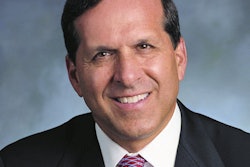
In the debut of a new monthly column, Dr. Roger P. Levin brings you the most thought-provoking topics from the Dental Business Study Clubs, a new organization focused on the business of successful dentistry. Each month, Dr. Levin will explore an aspect of the business of dentistry in detail.
 Roger P. Levin, DDS, is the executive founder of the Dental Business Study Clubs.
Roger P. Levin, DDS, is the executive founder of the Dental Business Study Clubs.Some dentists may raise their eyebrows when I say this, but it's my view that every practice can add another 15% to their production levels each year. The problem with most practices is that few of them ever fully maximize their production potential. Whether it's because of a lack of business training or simply that doctors are too busy treating patients, practices often miss the opportunities that can provide them with an additional 30% to 50% in production over several years.
After many years of observing dental practices, I have found that practices that focus on implementing strategies that address inefficiencies, build practice value, and increase customer service can experience a significant increase in their annual production.
5 ways
The following five strategies will help almost any practice increase production:
1. Schedule as many active patients as possible
Most offices operate with about 75% to 85% of active patients scheduled. Because overdue patients alone can cost a practice more than $1 million in production revenue every 20 years, we recommend having a target of 98% of active patients scheduled at all times.
The best way to approach scheduling is to create a philosophy at the front desk that no patient leaves without an appointment. For the ones who do manage to slip away, follow what we refer to as the one-day rule. This rule states that any patients who are overdue for an appointment by one day will be called that day. In the event that you don't reschedule them on that day, you must then begin a very strict follow-up process using phone calls, email, and text messages.
2. Schedule as many new patients as possible
“The best way to approach scheduling is to create a philosophy at the front desk that no patient leaves without an appointment.”
Keep in mind that new patients create a significant amount of annual production. Fortunately, acquiring new patients is often as simple as answering the phone. Unfortunately, an increasing number of practices have phone calls that are going to voicemail during working hours. I can tell you that phone tag is a game that dental practices almost never win.
Most new patients attempting to schedule appointments will not leave voicemail messages. They will either find another office or never call back. Make sure you have someone in place to answer every call with the goal of making it possible for every caller to become a new patient. Too many practices tell potential callers that they don't take their insurance or have the hours they want, without any attempt to find a way for the caller to make an appointment.
3. Perform a comprehensive diagnosis
Most new-patient exams are usually only a few minutes longer than an active-patient exam and spent primarily with the hygienist. The result is that the level of identified treatment is often below production potential.
Every new patient should receive a comprehensive examination, in which the doctor spends time with the new patient focusing on both need-based and elective dentistry. This is best achieved through what we call a five-phase exam. During the five-phase exam, the dentist works through five separate categories of diagnostic examination, including periodontal, tooth, cosmetic, implant, and occlusal.
All phases and any potential treatment are explained in detail, and the patient is invited back for a follow-up consultation if necessary. With this exam, average production per new patient typically increases by 40% to 50%, which will have a strong impact on overall practice production.
4. Maximize patient dental insurance
Dental insurance is often underutilized. A large number of patients don't follow-through with treatment recommendations and still have insurance benefits available.
Taking the time to notify patients that they will lose benefits if they don't undergo the recommended treatment often stimulates them to follow through on reimbursements. Practices should also focus on patients who have used all of their annual benefits and still have incomplete treatment. When you contact patients to schedule uncompleted treatment as their insurance benefits renew in January, they often take advantage of this opportunity.
Another important way to increase production through dental insurance is the in-house dental benefits plan. In-house benefit plans offer a way to receive basic hygiene services at an affordable monthly fee. Patients can also receive discounts on necessary treatment depending on the terms of the plan.
It's an excellent way to retain patients and increase referrals. There are reputable companies that can help your practice implement an in-house benefits plan, making it easy to operate, track, and monitor.
Also, don't forget to perform an annual insurance analysis. By scrutinizing your dental insurance scenario, you can create an insurance model that will work in the best interest of increasing practice production.
5. Add a new service
Adding new services almost always stimulates growth. As dentistry continues to advance in both materials and technology, new opportunities are available to provide care for patients that were unavailable in the past. Focusing on any current services, such as implant dentistry or periodontal therapy, that haven't yet reached their potential also is a good idea.
Make it a priority
Increasing production is a priority for all practices. By focusing on the above recommendations, almost any practice can experience a high percentage of growth in just a few years.
Roger P. Levin, DDS, is the executive founder of the Dental Business Study Clubs.
The comments and observations expressed herein do not necessarily reflect the opinions of DrBicuspid.com, nor should they be construed as an endorsement or admonishment of any particular idea, vendor, or organization.



















